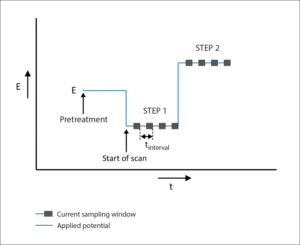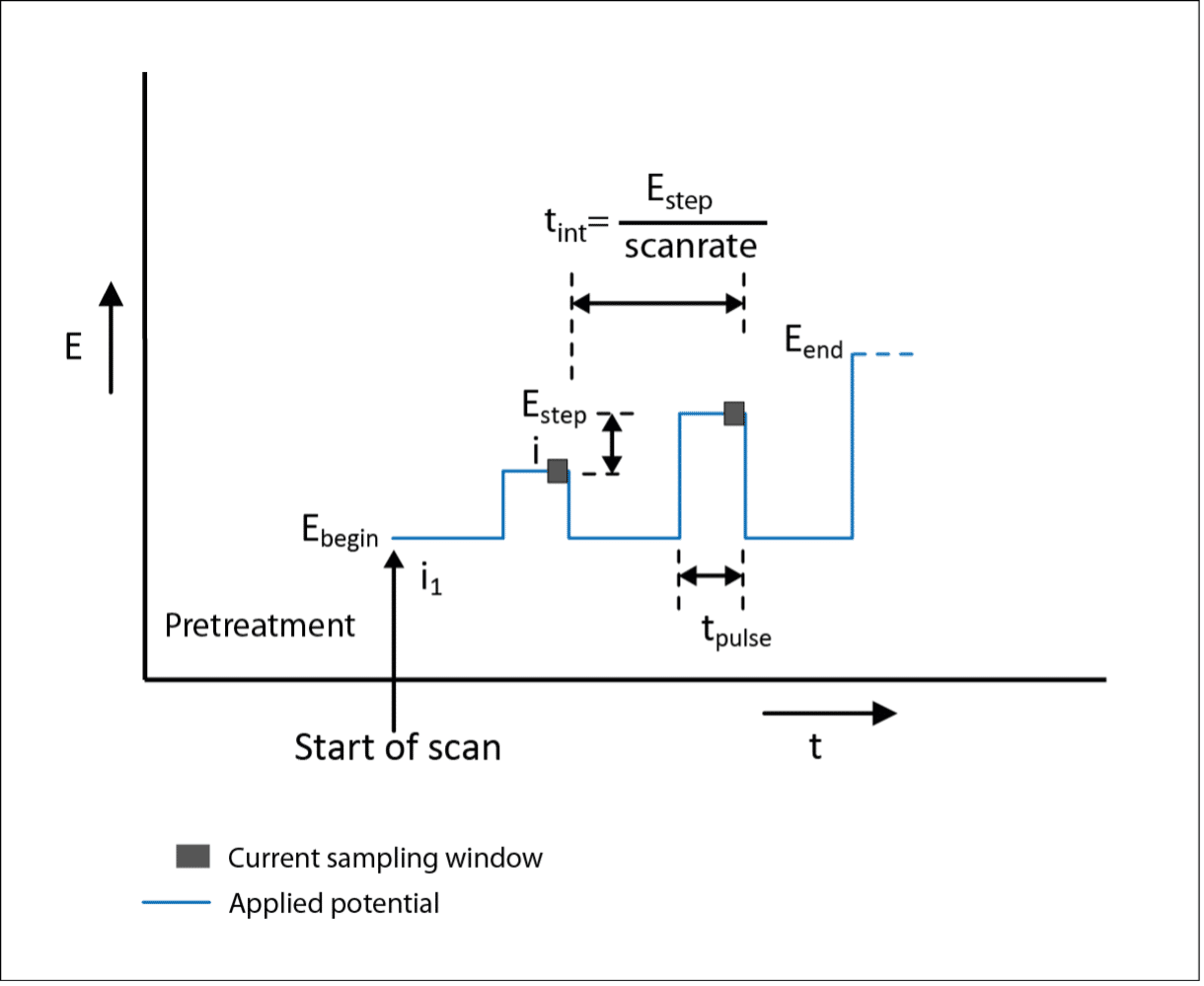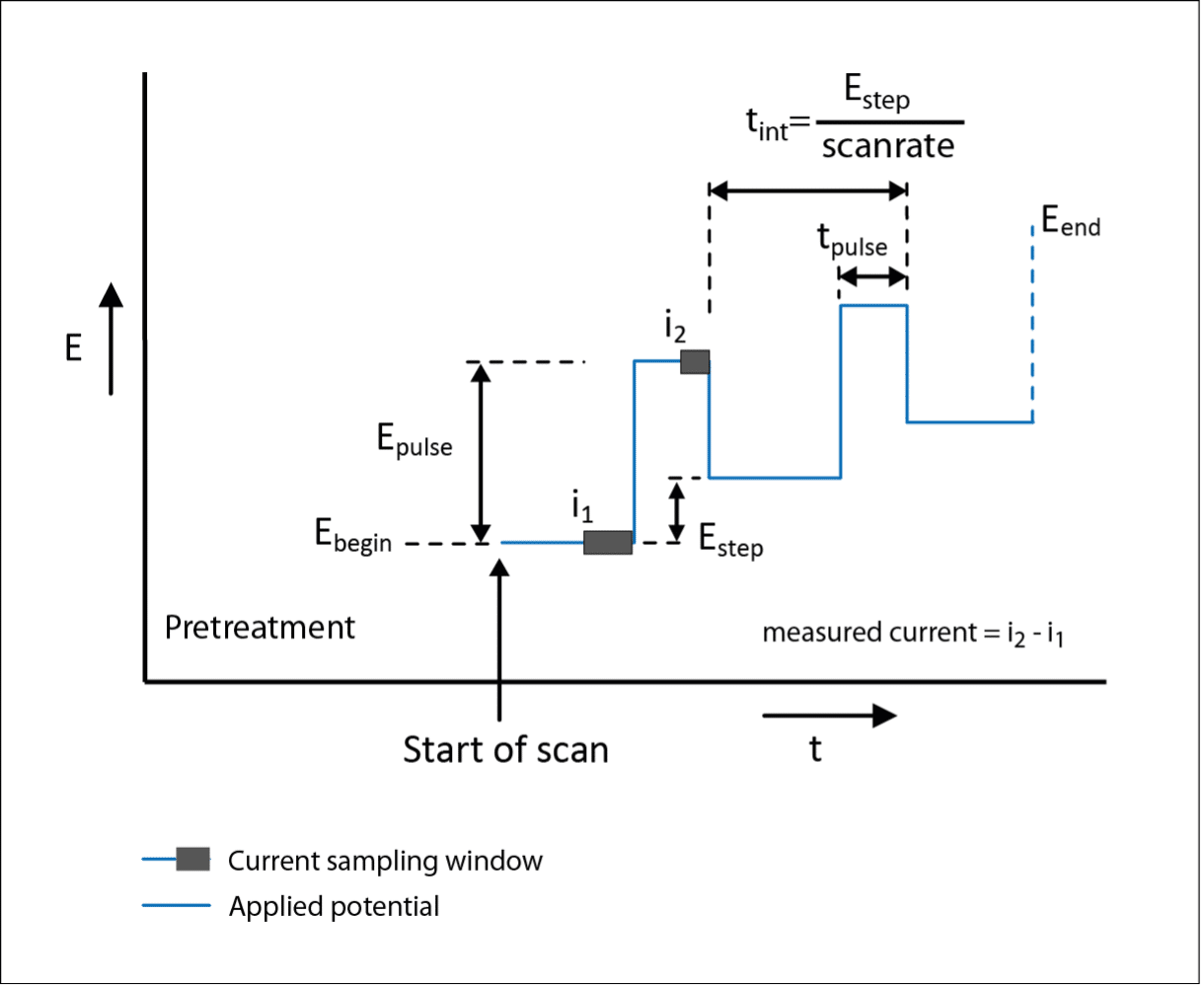Electrochemistry explained
Articles

Chronocoulometry (CC)
Chronocoulometry is an electrochemical technique during which a potential is set. The current is recorded and shown in a graph versus the time.
Zero Resistance Ammeter (ZRA)
Zero Resistance Ammeter (ZRA) is an electrochemical technique that measures the current flowing through it without adding any resistance. This means the current is measured without...
Zero Resistance Ammetry
Zero Resistance Ammetry is an electrochemical technique that measures the current flowing through it without adding any resistance. This means the current is measured without the Z...
Chronoamperometry (CA)
Chronoamperometry (CA) or Amperiometric Detection is a simple, widely used electrochemical measurement technique. Many sensors, like those for glucose or oxygen, require this tech...

Normal Pulse Voltammetry (NPV)
Normal Pulse Voltammetry (NPV) is an electrochemical technique. With Normal Pulse Voltammetry the influence of diffusion limitation on your I-E curve (Cottrel behavior) is removed....

Differential Pulse Voltammetry (DPV)
Differential Pulse Voltammetry (DPV) is an electrochemical technique. In Differential Pulse Voltammetry a potential scan is made using pulses with a constant amplitude of E pulse s...

AC Voltammetry (ACV)
In AC Voltammetry a potential scan is made with a superimposed sine wave which has a relatively small amplitude (normally 5 – 10 mV) and a frequency of 10 – 250 Hz. The AC sign...
High-speed linear scan cyclic voltammetry
High-speed linear scan cyclic voltammetry is cyclic voltammetry with a very high scan rate (up to 1×106 V·s−1). At PalmSens, high-speed linear scan cyclic voltammetry is u...

Fast Cyclic Voltammetry (FCV)
Fast Cyclic Voltammetry (FCV) of Fast-scan cyclic voltammetry (FSCV) is cyclic voltammetry with a very high scan rate (up to 1×106 V·s−1). Application of high scan rate ...
Cyclic Polarization
Cyclic Polarization is an electrochemical technique commonly called Cyclic Voltammetry at PalmSens. It is a known method of demonstrating the presence of a substance in a given li...
Staircase Cyclic Voltammetry
Staircase Cyclic Voltammetry is an electrochemical technique commonly called Cyclic Voltammetry at PalmSens. It is a known method of demonstrating the presence of a substance in a...
Polarization for corrosion (Tafel)
Polarization for corrosion (Tafel) is an electrochemical technique commonly called Linear Sweep Voltammetry (LSV) or Linear polarization at PalmSens. It is an electrochemical techn...
Staircase Voltammetry
Staircase Voltammetry is an electrochemical technique commonly called Linear Sweep Voltammetry (LSV) or Linear polarization at PalmSens. It is an electrochemical technique, where t...
Sample DC Voltammetry
Sample DC Voltammetry is an electrochemical technique commonly called Linear Sweep Voltammetry (LSV) or Linear polarization at PalmSens. It is an electrochemical technique, where ...
Staircase Linear Scan Voltammetry
Staircase Linear Scan Voltammetry is an electrochemical technique commonly called Linear Sweep Voltammetry (LSV) or Linear polarization at PalmSens. It is an electrochemical tech...
Potentiodynamic Linear Scan Voltammetry
Potentiodynamic Linear Scan Voltammetry is an electrochemical technique commonly called Linear Sweep Voltammetry (LSV) or Linear polarization at PalmSens. It is an electrochemical ...
Potentiodynamic Polarization
Potentiodynamic Polarization is an electrochemical technique commonly called Linear Sweep Voltammetry (LSV) or Linear polarization at PalmSens. It is an electrochemical technique, ...
Staircase Linear Sweep Voltammetry / sampled dc
Staircase Linear Sweep Voltammetry / sampled dc is an electrochemical technique commonly called Linear Sweep Voltammetry (LSV) or Linear polarization at PalmSens. It is an electroc...
